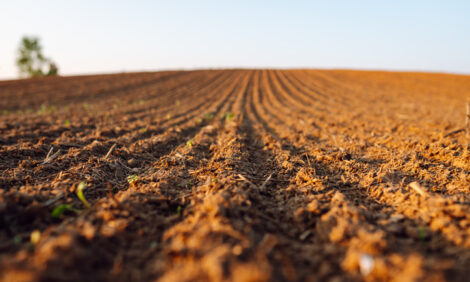



Beef Diversification: A Lifeline for New Zealand Dairy Farms?
NEW ZEALAND - How dairy farmers embrace beef genetics in the coming months could have a major impact in the direction of both sectors in New Zealand.While dairy farmers are struggling against what looks like the second year of low prices, the beef market is buoyant, with trade to China “booming” and overall production up 9 per cent.
In order to tap into high prices in the beef market, advisers at Beef+Lamb New Zealand are suggesting using beef sires to strengthen farm cash flows to the tune of NZ$70 per calf.
Last season's figures saw male dairy (bobby) calves achieve $50 compared to beef crossed animals at $120.
The organisation is working with breed societies to develop a Dairy Maternal Index to find sires suitable to bull heifers and cows.
With 70 per cent of beef production coming from the dairy industry, quality and standards of finishing from dairy-sired animals has been questioned by the US Department of Agriculture’s recent Foreign Agricultural Service report on New Zealand’s expanding beef sector.
The report underlined the successes of recent trade agreements, which Beef+Lamb NZ say saved $161 million last year, as well as stressing the torrid time farmers are having in the dairy markets.
Furthermore, the report attributed the rise in New Zealand beef production largely down to an increase in cow slaughter amid a global dairy price crash and higher beef prices.
Both the medium term prospects for both the beef and dairy sector are in the balance before businesses make key choices about herd numbers.
Suspicions do exist in some quarters over the suitability of cross breeding, but advisers reassure that breeding values for short gestation and calving ease are helpful options.
With a current supply shortage of quality beef for the table both domestically and internationally, Doug Lineham or B+LNZ described it as a “win win” from dairy farmers, to calf fatteners and meat processors.
“Dairy farmers have easier calving, better quality calves worth around $70 more and the calf reaers have faster growing calves, finishing earlier to higher carcass value,” he said.
“Meat processors benefit from an improved beef supply”.
And according to the USDA’s reckoning, demand for New Zealand beef is strong and will remain so into the 2016 marketing year, which is expected to increase a further three per cent.
How farmers react will “become evident” over the next twelve to eighteen months, the FAS added.
Michael Priestley
News Team - Editor
Mainly production and market stories on ruminants sector. Works closely with sustainability consultants at FAI Farms



